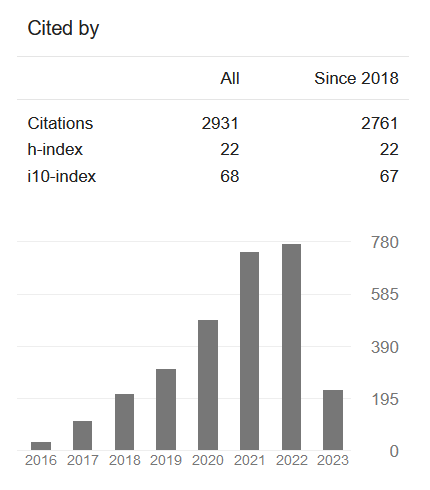Study of the Densities of Some R4NI - Solutions in Water - Isopropyl Alcohol Solvent Mixtures at 313.15 K by Magnetic Float Densitometerz and Then Study Masson’s Equation from Фv Data( Vol-3,Issue-3,March 2017 ) |
|
Author(s): Indu Saxena, Rikkam Devi, Vijay Kumar |
|
Keywords: |
|
|
Interactions, Tetra alkyl ammonium iodides, Isopropyl alcohol - Water. |
|
Abstract: |
|
|
Based on Masson’s equation we study the molecular interactions between the compositions of the binary solution mixtures for different (%) compositions of Water– Isopropyl alcohol by adding tetraalkyl ammonium iodide at 313.15K. The densities of the solution mixtures (ρ¬s)have been measured very accurately by using Magnetic float Densitometer. The densitometer works on the electrostatic attraction force developed by the passage of current through a solenoid .using this technique, the densities (d¬0¬) of Water – Isopropyl alcohol solvent and mixtures of some tetra alkyl ammonium iodide, viz. Et4NI, Pr4NI, But¬4NI, Pen4NI at 0, 20, 40, 60, 80, 100% compositions (v/v) have been determined experimentally. The apparent molar volumes have been calculated from density data using Masson’s equation and graph plotted between ϕv vs √c . The slopes of curves shows that in low dielectric constant medium (i.e, 20% water, =30.76 and 40% water, ∈=42.74 for all the four tetraalkyl ammonium iodide salts have positive slope. But as the dielectric constant of the solvent medium is increased by adding Water – Isopropyl alcohol, further additions of salts in the solution will start contributing towards the volume so the volume will increase on increasing the salt concentration therefore the plot ϕ¬¬¬v+ vs √c curves will give a positive and negative slope the data have been explained on the basis of dielectric constant of the solvent mixtures and size of the electrolyte ion. |
|
Cite This Article: |
|
| Show All (MLA | APA | Chicago | Harvard | IEEE | Bibtex) | |
Share: |
|

 DOI:
DOI: 



























